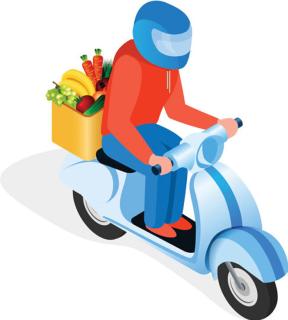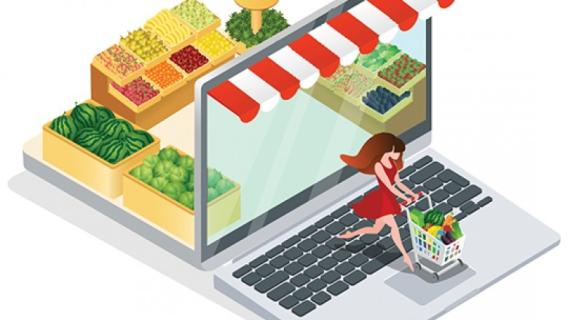In the digital age, where convenience and efficiency define consumer expectations, grocery delivery apps have emerged as a revolutionary force in the food shopping industry. As technology continues to advance, the future of grocery shopping increasingly hinges on the development of intuitive and efficient grocery delivery apps. These apps are not just a trend but a significant evolution in how we access and purchase food. Here’s a look at why grocery delivery app development is shaping the future of food shopping and how it benefits both consumers and businesses.
1. Convenience Redefined
Grocery delivery apps bring a new level of convenience to consumers, fundamentally altering how people shop for food. With just a few taps on a smartphone, users can browse through extensive product catalogs, place orders, and schedule deliveries. This convenience eliminates the need for time-consuming trips to the store and allows consumers to shop from the comfort of their homes. Features like real-time tracking and scheduled delivery windows further enhance the convenience, ensuring that groceries arrive exactly when and where they’re needed.
2. Personalized Shopping Experience
The future of grocery shopping is highly personalized, and grocery delivery apps are at the forefront of this transformation. Through sophisticated algorithms and data analytics, these apps provide tailored recommendations based on past purchases, dietary preferences, and browsing history. This personalization extends to:
- Customized Product Suggestions: Offering relevant products that align with user preferences.
- Targeted Promotions: Delivering special offers and discounts based on shopping habits.
- Meal Planning: Suggesting recipes and meal plans based on user choices.
By catering to individual needs and preferences, grocery delivery apps enhance the overall shopping experience and increase customer satisfaction.
3. Integration of Advanced Technologies
The integration of advanced technologies is a key factor in the evolution of grocery delivery apps. Innovations such as artificial intelligence (AI), machine learning, and blockchain are shaping the future of food shopping:
- AI and Machine Learning: These technologies improve product recommendations, optimize inventory management, and enhance user interfaces by predicting consumer needs and preferences.
- Blockchain: Ensures transparency and traceability in the supply chain, allowing consumers to access detailed information about the origin and quality of their food.
- Augmented Reality (AR): Offers virtual store tours and product visualization, enhancing the online shopping experience.
These technological advancements make grocery shopping more efficient, secure, and engaging.
4. Enhanced Operational Efficiency for Businesses
Grocery delivery app development is not only beneficial for consumers but also offers significant advantages for businesses. By leveraging these apps, grocery stores can achieve:
- Streamlined Operations: Automate order processing, inventory management, and delivery logistics, reducing manual errors and operational costs.
- Data-Driven Insights: Utilize analytics to understand customer behavior, optimize stock levels, and tailor marketing strategies.
- Scalability: Easily expand delivery areas and manage increased order volumes without the need for physical store expansions.
These efficiencies lead to improved profitability and scalability, enabling businesses to thrive in a competitive market.
5. Sustainability and Ethical Practices
As sustainability becomes a growing concern for consumers, grocery delivery apps are incorporating features to support eco-friendly practices. These include:
- Sustainable Packaging Options: Offering products with minimal or recyclable packaging.
- Carbon Footprint Tracking: Providing information on the environmental impact of deliveries.
- Local Sourcing: Highlighting locally sourced products to reduce transportation emissions.
By aligning with sustainability goals, grocery delivery apps appeal to environmentally conscious consumers and contribute to a greener future.
6. Future Trends in Grocery Delivery Apps
Looking ahead, several trends are likely to shape the future of grocery delivery apps:
- Voice Commerce: Integration with voice-activated devices for hands-free shopping.
- Subscription Models: Offering regular delivery services for staples and essentials at discounted rates.
- Smart Home Integration: Synchronization with smart home devices for automated grocery replenishment.
These trends will continue to enhance the convenience, efficiency, and personalization of grocery shopping, making it an even more integral part of everyday life.
Conclusion
Grocery delivery app development represents the future of food shopping, offering unparalleled convenience, personalization, and efficiency. As technology advances and consumer expectations evolve, these apps will continue to redefine how people access and purchase groceries. For businesses, investing in grocery delivery app development is not just a strategic move but a necessary step to stay competitive and meet the growing demand for digital solutions. Embracing this future ensures that your business remains at the forefront of the industry, delivering exceptional value and convenience to consumers.

